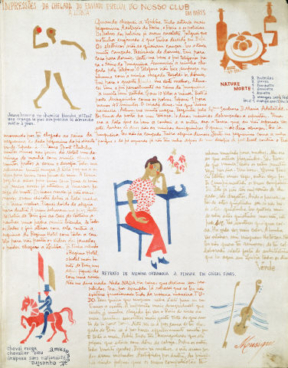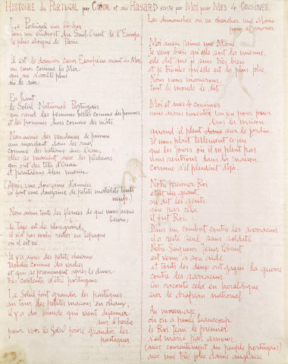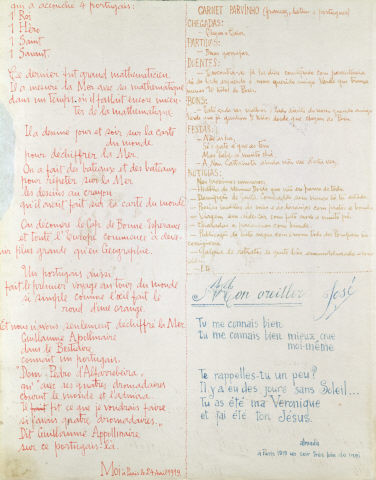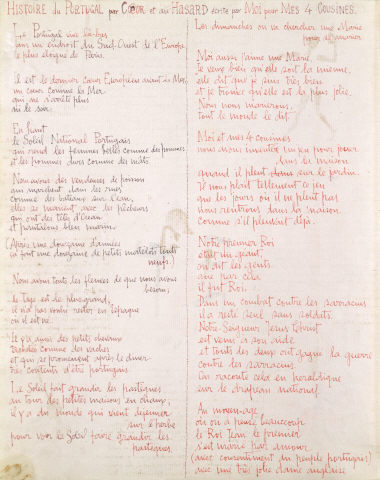First issue of the handwritten journal Parva (em Latim) [Parva (in Latin), where ‘parva’ in Portuguese also means ‘fool’], of which four numbers are known (1, 2, 4 and 5, all conserved in the CAM collection). The journal was conceived in the context of the ‘Five Colors Club’,* a ballet group created in 1918 on the occasion of the creation and performance of O jardim da Pierrette [The garden of Pierrette], written by Almada himself. The club was formed by Almada and four young friends, addressed by nicknames: Tareca (Maria Madalena Morais da Silva Amado), Lalá (Maria Adelaide Burnay Soares Cardoso), Zeca (Maria José Burnay Soares Cardoso) and Tatão (Maria da Conceição de Mello Breyner). The performance of O jardim da Pierrette was a decisive moment for the genesis of Almada’s poetics of ingenuity, here related to topics seen as essential to creation such as childhood, imagination and spontaneity. Almada would further develop these themes during his stay in Paris between 1919 and 1920.
Almada himself authored the entire journal, signing either with ‘Almada’, ‘Moi’ or ‘Verde’ [Green], while his four young friends also had their colour nicknames – purple for Tareca, white or yellow for Lalá, red for Zeca and blue for Tatão. The first issue of Parva includes several drawings; the texts ‘Lembrei-me de fazer este jornal’ [I remembered to do this newspaper], ‘Impressões da chegada a Lisboa do enviado especial do nosso Club em Paris’ [Impressions of our Club’s special envoy to Paris on arrival in Lisbon] and ‘Carnet parvinho’ [Little foolish notebook]; and the French-language poems Mon Oreiller [My pillow] and Histoire du Portugal par Cœur et au Hasard écrite par Moi pour Mes 4 Cousines [History of Portugal by Heart and Chance written by Me four My 4 Cousins]. Though the individual drawings and texts included in the first issue of Parva are dated from ‘1918-1920’, ‘1919’ and ‘1920’, all of them were probably made in 1920 after Almada’s return from Paris to Lisbon.
* Other works from the collection of the CAM also belong to this context. See the drawings and letters with inventory numbers DP167, DP168, DP176, DP183, DP184, DP247, DP248, DP249 and DP250.
SAF
May 2010








